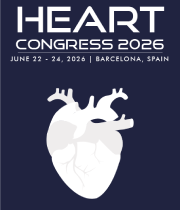Title : Burden of congenital heart disease in Northern Morocco: Challenges and perspectives
Abstract:
Introduction: Congenital Heart Diseases can be defined as malformations of the heart and/or vessels, present at birth, related to abnormal development.
They also include malformations resulting from the abnormal persistence after birth of structures that normally exist during fetal life.
Materials and Methods: This is a retrospective, descriptive, non-analytical study involving 100 newborns hospitalized in the neonatal intensive care unit of Mohammed VI University Hospital in Tangier, over a 12-month period from June 26, 2024, to June 26, 2025.
Results: The hospital prevalence of congenital heart disease was 3.33%.
The mean age at diagnosis was 3.28 days, with a sex ratio of 1.38 (42% female, 58% male).
Most patients had no social insurance coverage (53%), and 47% of the newborns were from Tangier.
Prematurity was found in 49% of cases, and 34% of newborns were born to consanguineous parents.
The mean maternal age was 25 years, and prenatal follow-up was noted in 44% of mothers. Medication use during pregnancy was observed in 34% of them.
Respiratory distress was the most common presenting symptom (45%).
Intrauterine growth restriction (IUGR) was observed in 44% of the newborns.
Acyanotic congenital heart diseases accounted for 71%, while cyanotic forms represented 29% of cases.
Ventricular Septal Defect (VSD) was the most frequent acyanotic lesion, while Tetralogy of Fallot was the most common cyanotic congenital heart disease.
35% of newborns required medical treatment, and 45% had a surgical indication.
Mortality reached 51%, secondary in more than half of the cases to the progression of the underlying cardiac defect.
Conclusion: It appears essential to implement a national neonatal screening strategy for congenital heart diseases, particularly using pulse oximetry.
This simple, non-invasive, and low-cost tool can be easily integrated into routine maternity protocols, enabling earlier diagnosis of critical forms.




